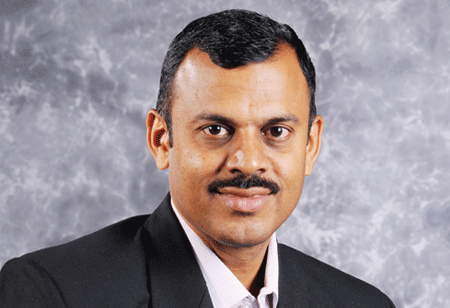Digitalization will have a significant impact on the water sector as it can improve the way water resources are being used and help in managing them more efficiently. For example, some of the benefits are:
• Energy efficiency: Ensuring sustainability and reducing energy consumption is essential to achieve a green footprint. For example, in the food and beverage industry many processes consume high amounts of energy. Contributing to this is the use of fixed-speed pumps that run at maximum capacity all the time, in auxiliary food-processing applications such as boilers and cooling towers. To address this, Grundfos has developed an energy-saving ‘E – version’ of its popular, widely used fixed-speed CR pump. The CRE pump is an ‘intelligent solution’, or ‘iSOLUTION’, incorporating an electronic motor with a built-in variable speed drive, giving it the ability to ramp up and down as it detects demand thereby enabling significant amount of energy savings.
• Reduced chemical use and better reuse of industrial wastewater: Process optimization and raw water monitoring can significantly reduce the amount of chemicals needed through accurate and frequent sampling. Dosing pumps used for chemical treatment processes such as disinfection, coagulation, flocculation, substrate dosing and alkalinity correction are some industrial applications in the pharmaceutical, chemical, and the food and beverage, etc. One such technology is the Grundfos’ SMART Digital Dosing system, an intelligent chemical dosing solution that ensures superiority in precision and accuracy as compared to traditional dosing pumps.[i] Automated chemical dosing pumps and disinfecting solutions ensure that manufacturing by product and effluents are treated properly and can be reused. Accurate dosing of chemicals is crucial for a successful wastewater treatment process. With Grundfos’ SMART Digital solutions, chemical dosing of wastewater treatment is made more accurate, reliable and cost-effective in the long run.
• Reduced downtime: Digitalization allows predictive maintenance by helping a utility decide when repairs are necessary. This can save time and labor by avoiding unnecessary maintenance and outages that lead to long downtimes. For example, in the Textile Industry, India Dyeing Private ltd. based out of Tirupur, to optimize the performance of their pumpa variable speed system was installed to fill the tanks faster which resulted in trouble free operation.
• Service: Today adoption of digital services ensures data-driven decision making in the pumping industry.
For example, Grundfos’ mobile application called SmArt Serv enables customers to raise a service request online, therefore reducing downtime significantly[iii]and limiting human interface, through remote monitoring of intelligent pumps. Solutions like these are crucial in times of the COVID pandemic where the system can operate and run on its own with no human intervention.
2.How Can Cloud Connectivity And Digital Services Benefit All The Users Involved?
Digital and cloud connected services reduce the cost of managing and maintaining your pumping systems. Intelligent and cloud connected pumps have been on the rise owing to the scalability and flexibility they offer to pump manufacturers in terms of servicing. Purpose built cloud applications gather real time data from IoT sensors which has helped in proactive maintenance of water network infrastructure.
Grundfos has entered into a strategic collaboration with Siemens to harness the power of digitalization for solving the world’s water and climate challenges. Siemens and Grundfos are combining the competences of both companies to support customers in their digital transformation and in the implementation of intelligent solutions. Solutions from Siemens Digital Enterprise portfolio can be used, for example, to increase the uptime of pumps and motors, and to optimize their operation. Siemens MindSphere open cloud-based IoT operating system combined with Grundfos IoT solutions can optimize pump and motor schedules to maximize uptime and minimize energy consumption.
Similarly, with our focus on prevention of water leaks we invested in smart water infrastructure to predict pump failures and leakage detection. In collaboration with Microsoft, we established a
